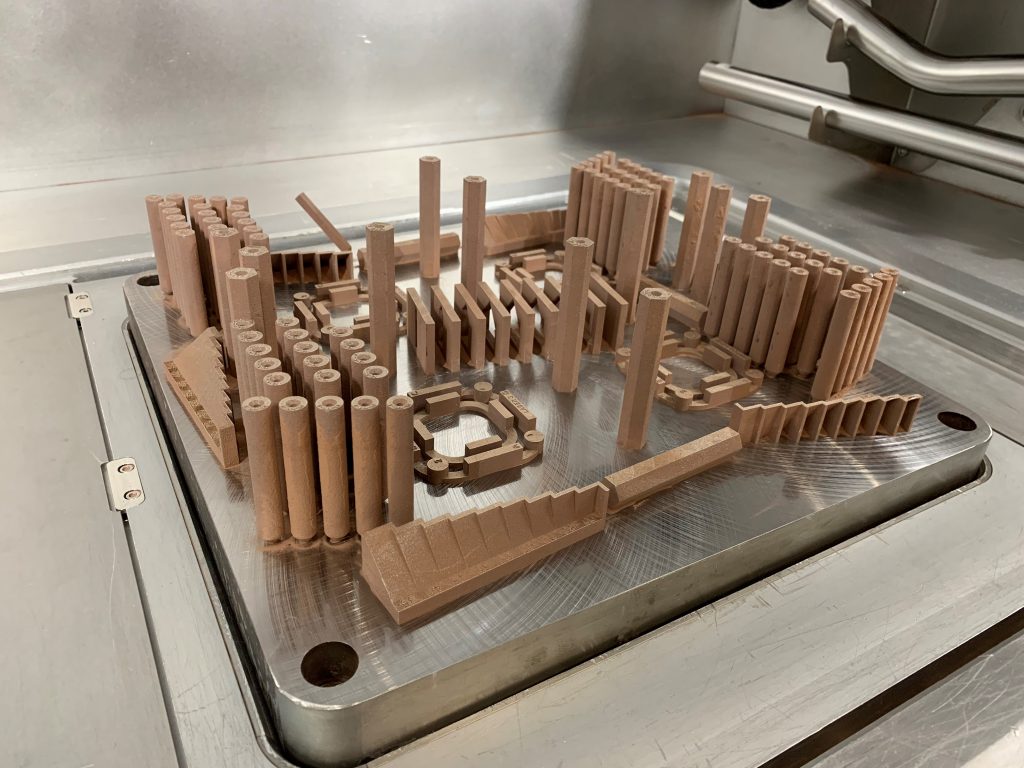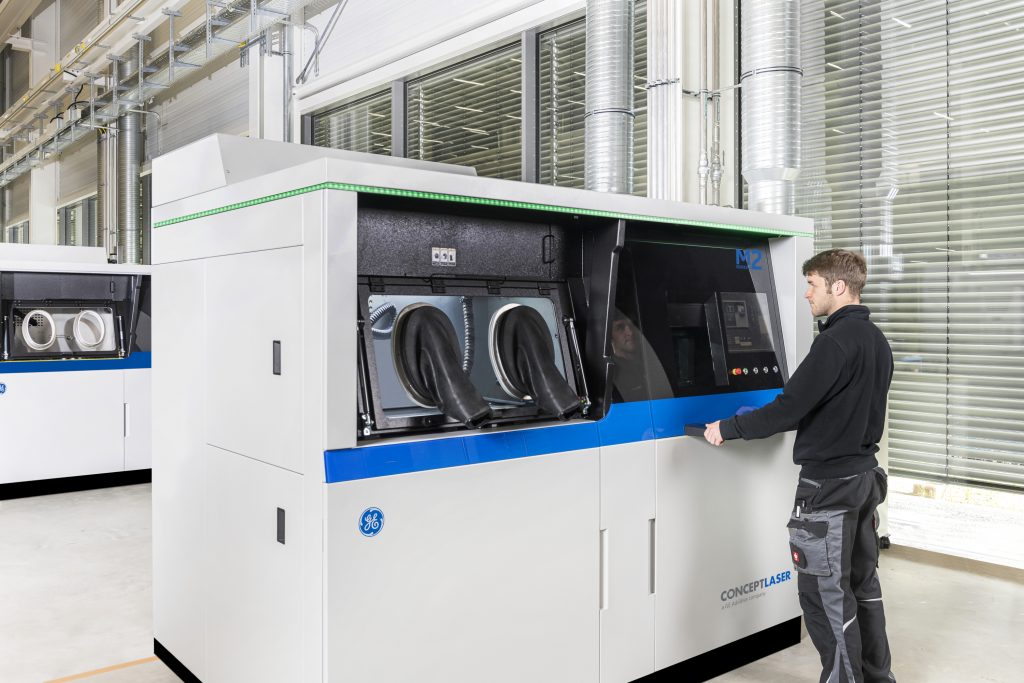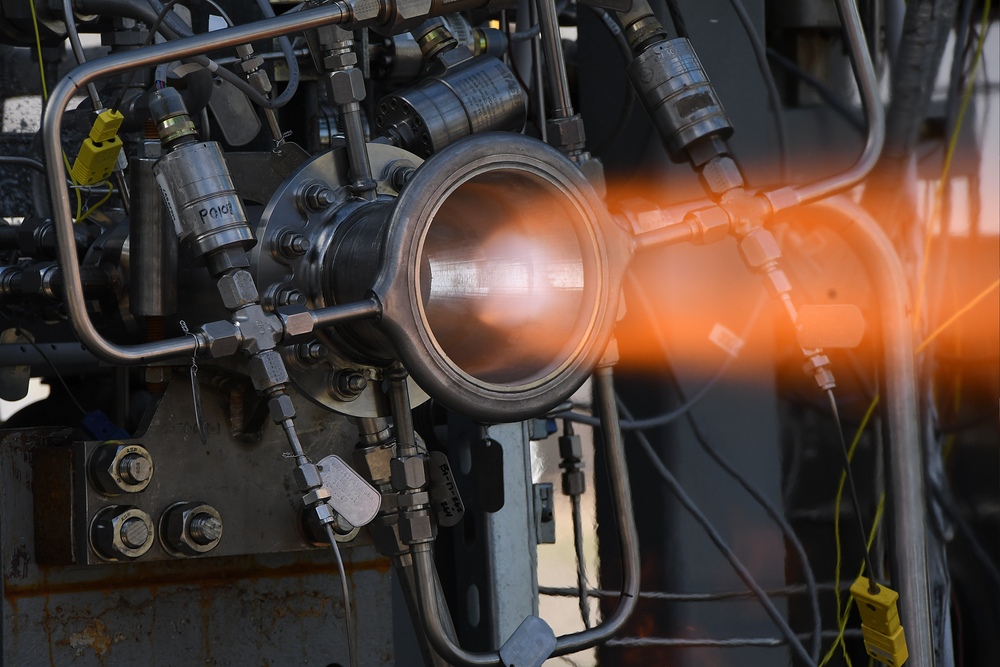Sintavia, an additive manufacturing service provider for the aerospace sector, has developed a new proprietary 3D printing process for copper alloy.
Developed specifically for GRCop-42, a NASA-developed copper alloy created for the 3D printing of rocket propulsion components, the technology includes both a proprietary set of 3D printing parameters and a novel heat treatment post-processing step.
Pavlo Earle, Sintavia’s Vice President of Engineering, also revealed that the company was working on developing in-house standards for a number of other aerospace-grade materials, including refractory alloys.
“Today’s announcement marks the first time we have publicly disclosed Sintavia’s ongoing material development efforts,” adds Earle. “As a company, we are uniquely positioned to unlock the potential of printing difficult materials cost-effectively and with excellent mechanical properties.”

Copper in the aerospace sector
Copper is well-known for its excellent thermal conductivity, making it the material of choice for many heat transfer applications such as heat exchangers, piping, and heat sinks for engines and electronics. The metal is also characterized by its ductility and electrical conductivity, making it great for drawing into wires and other electrical connections.
In the aerospace sector, copper’s properties lend themselves quite well to the production of liquid rocket engine combustion devices. GRCop-42, in particular, was created by the NASA Marshall Space Flight Center (MSFC) in Alabama and the NASA Glenn Research Center (GRC) in Ohio. The high-strength, high-conductivity alloy was designed specifically for use in high heat flux aerospace applications such as 3D printed combustion chamber liners and fuel injector faceplates.
The year 2018 saw the NASA team conduct a series of 3D printing and hot-fire tests using GRCop-42, proving the material’s processability on a GE Concept Laser M2 system.

3D printing GRCop-42
Unlike NASA, Sintavia’s GRCop-42 parameter set was developed on an EOS M400-4 3D printer, and reportedly yields components with extremely high densities of at least 99.94%. The technology is also capable of delivering minimum tensile strengths of 28.3 ksi, minimum ultimate yield strengths of 52.7 ksi, and minimum elongations of 32.4%.
As a bonus, the proprietary process also eliminates the need for hot isostatic pressing during the post-processing phase – a step typically used to increase the density (and strength) of porous parts. The original NASA methodology wasn’t able to omit this step. As such, the Sintavia process should theoretically further reduce the time and cost of 3D printing parts made of GRCop-42, owing to a more streamlined end-to-end workflow.
Earle concludes, “The fact that we were able to achieve these levels of performance on GRCop-42—by all indications a very difficult metal for additive manufacturing—further cements Sintavia’s role as the global leader in the application of AM within the Aerospace, Defense, and Space industry.”

With ongoing innovations in materials science, there are an increasing number of options for 3D printing copper, beyond just powder bed fusion technology. Earlier this year, 3D printer OEM Desktop Metal launched its own pure copper powder, DM Cu, for use with the company’s binder jet 3D printing technology. The product gave users of the DM P2500 3D printer the ability to 3D print 99.9% pure copper components on the shop floor.
Elsewhere, composite and metal 3D printer provider Markforged has also released a pure copper material option for use with its Metal X FFF 3D printer. The filament brings copper part production to the desktop, with Markforged’s automotive clients citing part lead time reductions of 12x and part cost reductions of 6x.
Nominations for the 2021 3D Printing Industry Awards are now open, have your say in who is leading the industry now.
Subscribe to the 3D Printing Industry newsletter for the latest news in additive manufacturing. You can also stay connected by following us on Twitter, liking us on Facebook, and tuning into the 3D Printing Industry YouTube Channel.
Looking for a career in additive manufacturing? Visit 3D Printing Jobs for a selection of roles in the industry.
Featured image shows GRCop-42 copper parts 3D printed on an EOS M400-4 3D printer. Photo via Sintavia.



